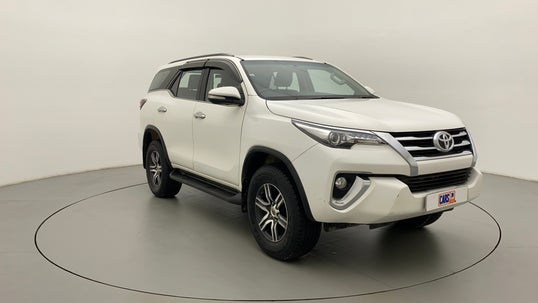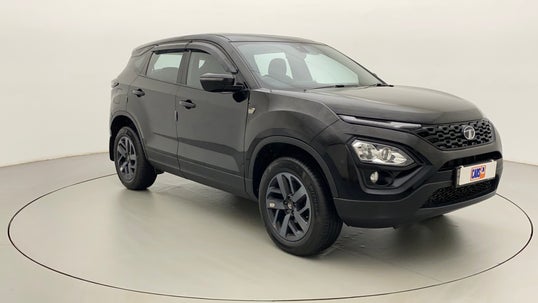Types of Number Plates in India

Updated on: 27th September, 2023 IST

Number plates, also known as licence plates or car registration numbers, are an essential component of vehicle identification. In India, various types of number plates signify different aspects of a vehicle's registration.
Indian number plates are not merely a random combination of characters; they hold valuable information about the vehicle's origin, registration type, and more. Each plate type serves a unique purpose, ranging from regional identification to specialised categories. Understanding these different plate types adds depth and intrigue to the world of car registration in India.
Join us on this informative journey as we explore the diverse range of car registration number plate types found across the country.
Table of Contents
Decoding the Indian Number Plate
As per The Motor Vehicles Act of 1988, all motor vehicles that travel on Indian roads must undergo registration with the Regional Transport Office (RTO) and bear a licence plate, also known as a number plate. India boasts a variety of number plate types, and failing to register a vehicle is a direct violation of the act, resulting in a substantial penalty and your vehicle being seized.
A licence plate is a unique combination of letters and digits that form a registration number. The district RTO issues the licence plate, which must be securely affixed to both the front and rear of the vehicle, with proper illumination. India's international registration code is IND.
The first part of the licence plate proudly showcases the international registration code for India, which is IND.
The next set of letters on the number plate, such as DL, PB, KL, and UP, indicate the region or State of vehicle registration. For instance, a vehicle registered with the Bihar RTO will display the letters BR. The following digits signify the specific district of registration.
The next part of the licence plate comprises a set of numbers, usually four in length, serving as a distinctive identifier for the vehicle. Some numbers, known as vanity numbers, like 2023, 8888, and 5005, are deemed VIP numbers and can be obtained through RTO auctions at a premium price.
Also Read: BH Number Plate Registration
Types of Number Plates in India
The different types of number plates in India serve various purposes and convey important information about the vehicles they are attached to. From distinguishing between private and commercial vehicles or green number plates that signify electric, eco-friendly vehicles, each number plate carries its significance and adds to the diverse landscape of Indian roads.
Here are the different types of number plates in circulation in India:
- White Number Plate With Black Lettering
The white number plate with black lettering is the most common type of number plate found in India. It is used for personal cars and signifies that the vehicle is privately owned and not used for commercial purposes.
- Yellow Number Plate With Black Lettering
The yellow number plate with black lettering is used for commercial vehicles in India. This type of number plate is typically seen on taxis, cabs, trucks, and other vehicles involved in commercial transportation services. Commercial vehicle drivers with yellow number plates are required to have a commercial driving permit and adhere to specific tax regulations related to their commercial operations.
- Black Number Plate With Yellow Lettering
The black number plate with yellow lettering is designated for rental vehicles in India. These number plates are often used by rental car companies and luxury hotels for their transport services. Vehicles with black number plates can operate as commercial vehicles without the driver needing to possess a commercial driving permit.
- Green Number Plate With White Lettering
The green number plate with white lettering is exclusively used for electric vehicles (EVs) in India. These number plates indicate that the vehicle is powered by electricity and promotes the use of eco-friendly transportation options. Electric cars, electric buses, and other electric commercial vehicles display green number plates to highlight their contribution to reducing carbon emissions and promoting sustainable mobility.
- Red Number Plate With White Lettering
The red number plate with white lettering is issued as a temporary registration for brand-new vehicles in India. When a vehicle is newly purchased, it receives a red registration plate until the permanent registration is issued by the Regional Transport Office (RTO). Temporary registration is valid for a limited period, usually one month, during which the necessary documentation and formalities for permanent registration are completed. It is important to note that some Indian States do not permit vehicles with temporary registration to be driven on the road until they have obtained permanent registration.
- Blue Number Plate With White Lettering
The blue number plate with white lettering is reserved for vehicles belonging to foreign diplomats, embassy staff, and consular officials in India. These number plates indicate the diplomatic status of the vehicle and signify its association with an embassy or consulate. Blue number plates are used by diplomats from foreign missions, including the United Nations (UN), Diplomatic Corps (CD), and Consular Corps (CC). They serve as a visual marker to identify diplomatic vehicles and convey certain privileges and immunities granted under international conventions.
- Number Plate With an Upward-Pointing Arrow
Number plates with an upward-pointing arrow symbolise military vehicle registration in India. These number plates are issued by the Ministry of Defence and are reserved for vehicles used by the armed forces. The upward-pointing arrow, also known as the Broad Arrow, appears at the beginning or after the second character on the number plate. The following digits indicate the year of procurement, followed by the base code and serial number. The letter at the end of the number plate denotes the class of the military vehicle.
Also Read: VIP Number Plate Registration
What Are High-Security Registration Plates (HSRP)?
All vehicles registered after April 1, 2019, are required to display HSRP or High-Security Registration Plates. This rule is also applicable to older vehicles with conventional number plates. The purpose of these high-security plates is to enhance vehicle security, as they are exclusively issued by the government. Furthermore, HSRPs contribute to the creation of a comprehensive national database of registered vehicles.
High-security number plates are standardised across all States in India. They are constructed from durable aluminium material and incorporate a laser-etched code positioned next to the IND (international registration code for India) and an Ashoka Chakra hologram. The registration number itself is hot stamped with IND engraved, providing an added layer of authenticity. The number plates are affixed with snap locks that render them non-reusable once tampered with.
By implementing HSRPs, the government aims to curb vehicle theft and promote the digitalisation of vehicle registration information. These plates offer enhanced security features, making it easier to identify and track registered vehicles while ensuring the authenticity of their number plates.
Future Possibilities and Advancements of Number Plates
As technology continues to advance, the humble number plate is not exempt from innovation. In the future, we can expect to see several exciting possibilities and advancements in the realm of number plates in India. Here are some potential developments to look forward to:
- Smart Number Plates
With the rise of smart technologies, number plates could become more than just identification tags. Imagine number plates equipped with RFID (Radio Frequency Identification) or NFC (Near Field Communication) chips, allowing seamless integration with toll booths, parking systems, and automated traffic management.
- Digital Display Number Plates
Instead of the traditional physical plates, digital display number plates may become a reality. These plates would utilise LED or e-ink technology to showcase the registration number, allowing for easier customisation and updates when required.
- Vehicle-to-Vehicle Communication
Number plates could serve as a communication medium between vehicles, enabling vehicle-to-vehicle (V2V) communication systems. This would enhance road safety by facilitating real-time information exchange about traffic conditions, hazards, and emergencies.
- Embedded Security Features
As security concerns persist, future number plates may incorporate advanced security features such as biometric authentication or embedded holograms to prevent counterfeiting and unauthorised tampering.
- Integration with Intelligent Transportation Systems
Number plates could play a crucial role in integrated transportation systems. They may be linked to smart city infrastructure, allowing for seamless monitoring of traffic flow, automated toll payments, and enforcement of traffic rules.
- Sustainability and Green Initiatives
In line with environmental concerns, future number plates could incorporate eco-friendly materials or even integrate solar panels to harness renewable energy for auxiliary purposes like powering vehicle sensors or charging electric vehicles.
Also Read: High Security Number Plate Registration
The Bottom Line
In conclusion, the world of number plates in India is diverse and ever-evolving. From the different types of plates denoting private, commercial, rental, electric, diplomatic, and military vehicles to the implementation of high-security registration plates, the landscape of number plates is continuously adapting to technological advancements and the changing needs of the automotive industry.
As we move towards a more connected and digitally-driven future, number plates have the potential to become a vital component of intelligent transportation systems, ensuring safer, more efficient roads for all. With these advancements, we can anticipate enhanced vehicle security, improved traffic management, and a more connected and sustainable transportation ecosystem in India.
FAQs
Q. What is the purpose of having different types of number plates?
Different types of number plates are used in India to identify different types of vehicles and their owners. For example, white number plates are used for private vehicles, yellow number plates are used for commercial vehicles, and green number plates are used for electric vehicles. This helps to ensure that the correct taxes are paid and that vehicles are properly registered.
Q. How can I obtain a personalised number plate?
Personalised number plates can be obtained through an auction held by the Regional Transport Office (RTO). The auction is open to all citizens, and the highest bidder wins the right to use the number plate.
Q. Are there any restrictions on the content of personalised number plates?
Yes, there are some restrictions on the content of personalised number plates in India. For example, number plates cannot contain any offensive or political language. They also cannot contain any numbers or letters that are similar to official government plates.
Q. What are the advantages of high-security number plates?
High-security number plates are made of a mix of aluminium and other materials that make them more difficult to counterfeit. They also have a hologram and other security features that make them easier to identify. This helps to reduce incidents of vehicle theft and fraud.
Q. Can I transfer a fancy number plate to another vehicle?
Yes, you can transfer a fancy number plate to another vehicle. However, you will need to apply for a transfer of ownership with the RTO. The RTO will then issue a new registration certificate for the vehicle with the new number plate.
Recently Added Cars to Buy
Other Blogs
- Recent
- Featured
Popular Cities to Sell Car























